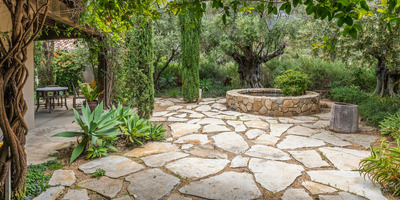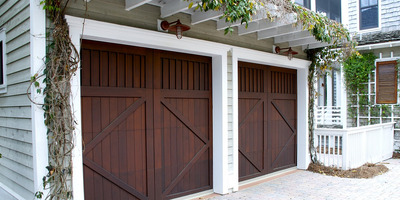Fence Maintenance Tips: How to Keep Your Fence Looking New
Fence Maintenance Tips: How to Keep Your Fence Looking New
Each fence, regardless of its construction quality, endures constant exposure to the elements. Wind, rain, sunlight, snow, and seasonal shifts all take a toll. Maintaining your fence not only preserves appearance but also extends durability. Early care always pays off. Property owners who start with high-quality construction, such as work done by a GTA Grizzly fence builder, benefit from a solid foundation, but consistent upkeep is what keeps the fence performing well and looking presentable over the years.
Fencing wears differently depending on material, environment, and use. Wooden fences absorb moisture, metal fences rust, and vinyl fences discolor or warp with heat. Without regular attention, even high-end fences age quickly. Maintenance addresses these vulnerabilities before they become costly repairs.
A neglected fence drags down property appearance. On the flip side, a clean, well-kept one adds structure, charm, and value. Knowing what to look for and how to respond helps homeowners keep fences looking newer for longer.
Regular Inspections Prevent Bigger Problems
Frequent inspection works like a routine health check. It reveals minor issues before they escalate. Walk the fence line seasonally, ideally in spring and fall. Look closely. Notice rot, cracks, rust, leaning posts, or loose boards.
For wood, watch for soft spots or discoloration—common signs of moisture damage. Tap questionable areas with a tool. A hollow sound may signal decay. For metal fences, check joints and painted surfaces for bubbling, scratches, or corrosion. Vinyl fences often show signs of warping or surface grime first.
Also, assess structural alignment. Posts should remain upright and firm. Wobbly posts usually indicate loose footings or water-related soil erosion. Ignoring these signs invites bigger problems down the road. Small shifts can turn into collapsed sections if left unchecked.
By inspecting regularly, maintenance becomes preventive, not reactive. A stitch in time, after all, saves nine.
Cleaning Techniques for Different Fence Types
Cleaning maintains both function and look. Dirt buildup, mildew, and algae reduce lifespan and hide underlying issues. How you clean depends on the material type.
Wood: Use a gentle mix of water and mild soap. Scrub using a stiff-bristle brush. For deep stains or mildew, mix vinegar with water or use a fence-specific cleaner. Avoid power washing unless pressure is controlled—it can strip surface fibers or force moisture into joints.
Vinyl: Wipe down with a sponge or cloth and soap solution. For stubborn spots, use white vinegar or diluted bleach carefully. Vinyl resists water but can discolor under UV exposure if dirt builds up.
Metal: Remove rust gently with sandpaper or a wire brush. Clean the surface using soapy water and rinse thoroughly. Dry fully to prevent flash rusting. Touch up paint afterward to reseal the exposed area.
Always rinse with clean water once finished. Let the fence dry before applying any protective coating. Regular cleaning not only boosts curb appeal but also helps you spot problem areas quickly.
Sealing, Staining, and Painting for Protection
Coating materials extend life and enhance appearance. Each has a different goal—sealers guard against moisture, stains bring out natural tones, and paint offers color with protection.
Sealing works best for bare or lightly stained wood. It creates a barrier that repels water and slows UV damage. Reapply every one to three years, depending on weather conditions and wear.
Staining adds pigment while soaking into the wood grain. Semi-transparent stains highlight natural textures, while solid stains act more like paint. Most last longer than sealers—often up to five years—but still require periodic touch-ups.
Painting covers completely and provides a thicker layer of defense. It hides imperfections but chips and peels over time, especially with moisture exposure. Choose exterior-grade paint and primer, and plan for recoating every few years.
Whatever finish you pick, timing matters. Apply coatings in dry weather, ideally between 10°C and 25°C. Prep the surface—clean, sand, and let it dry completely. Proper application helps the coating last longer and look better.
Addressing Structural Issues Promptly
A leaning post or sagging panel rarely fixes itself. Structural repairs demand attention as soon as issues appear. Left too long, they compromise the entire fence.
For wood fences, loose posts often result from rotted bases or shifting soil. Dig around the base to check the footing. If concrete has cracked or wood has weakened, replacement may be needed. In mild cases, reinforcing with gravel or adding post brackets helps.
Metal fences may suffer bent rails or rusted joints. Tightening bolts, replacing screws, or welding can restore stability. Where rust has compromised the structure, replacing damaged sections is the safest route.
Vinyl panels sometimes pop out of alignment or crack from impact. Most come in modular parts, so damaged pieces can be swapped with matching sections. Keep a few extra panels from installation if possible—they’ll match color and size better than new ones later on.
Quick action ensures the rest of the fence stays secure. Structural soundness underpins all other maintenance efforts.
Seasonal Preparation and Long-Term Planning
Each season presents unique challenges. Winter snow adds weight and moisture. Spring brings rain, insects, and quick plant growth. Summer intensifies UV exposure. Fall may cause leaf buildup and hidden rot.
Before winter, trim back nearby branches to avoid snow damage. Ensure posts are firm and coatings are intact. Don’t let leaves or snow sit at the base—they trap moisture and promote decay.
In spring, clean surfaces, check joints, and address any winter damage. Replace nails, tighten screws, and reapply stain or paint where needed. Spring is also ideal for upgrades or redesigns, since weather cooperates.
Summer maintenance includes light cleaning and inspecting sun-exposed areas for signs of fading or splitting. Water occasionally to prevent surrounding soil from pulling away from posts.
Fall is best for sealing or staining. Temperatures allow for good drying, and it preps the fence before harsh weather hits. Remove plant growth climbing the fence—it holds moisture and hides issues.
Long-term, plan inspections and treatments on a rotating schedule. Small routines now reduce large costs later.
Fences frame outdoor spaces, define property, and enhance visual appeal. To stay strong and attractive, they need attention—regular, mindful, and well-timed. A small effort each season leads to years of performance.
Materials behave differently, but all require basic care. Inspection, cleaning, sealing, and structural repairs work together to keep your fence functional and fresh. Start with quality installation, follow with consistent upkeep, and adapt based on local climate and wear.
Those ready to protect their investment and preserve curb appeal will find success in practical routines and steady maintenance. With patience and planning, any fence can stay sharp through every season.
By
Monika
More Services

Sewer Pipe Comparison: Which Material Suits Your Home Best?
Different sewer pipe types impact home drainage and repair costs. PVC, cast iron, and polypropylene each offer unique benefits. Choosing the right material depends on your specific needs. This article explains these options and helps you pick the best sewer pipe for your home.

Flagstone Landscaping: Benefits, Installation Tips, and Maintenance Guide
In this article, we explore flagstone as a durable, natural material ideal for walkways, patios, and garden paths. Flagstone resists shifting, heavy impact, and harsh weather, offering long-lasting strength and aesthetic appeal for outdoor landscaping projects.

Understanding Bail in Canada: A Guide to the Process
Being arrested in Canada can be confusing, with the bail hearing being a crucial step. Bail determines if an individual stays in jail or returns to society while awaiting trial. Understanding bail laws often requires an experienced lawyer to build a case and ensure proper representation.

The Heat Solution as an Effective Bed Bug Treatment
Bed bugs disrupt sleep and cause anxiety. Heat treatment, a popular and effective pest control method in Canada, raises temperatures to eliminate bed bugs at all stages. Understanding its process, benefits, and limitations helps homeowners choose the best solution for their situation.

Revamping Your Entryway: Innovative Garage Door Design
Design experts from HGTV assert that a simple garage door renovation can significantly transform your home's exterior. This guide will navigate you through revitalizing your entryway with cutting-edge garage door designs from premier decor websites.

Is your cobot configured for optimal performance?
Cobots are robots that are designed to work alongside human employees in various industries, from manufacturing and healthcare to warehousing and education. In this article, we will look at the importance of maximizing your cobot’s productivity.

Should A Piano Be Tuned Before Moving?
The piano is one of the biggest, heaviest, and most sensitive musical instruments. Of course, the delivery of a piano or grand piano expects extremely cautious and thorough operation in all aspects, including setting up, using, storing, and, most importantly, transportation.

An Online Scam Can Happen To Anyone – Will You Be Prepared?
Once you get burned by milk, you'll blow on cold water. The same thing's true about getting scammed. If you fall for a phishing attack, a spam offer, a crypto scam, or something totally different, you'll treat every new email as a potential threat.